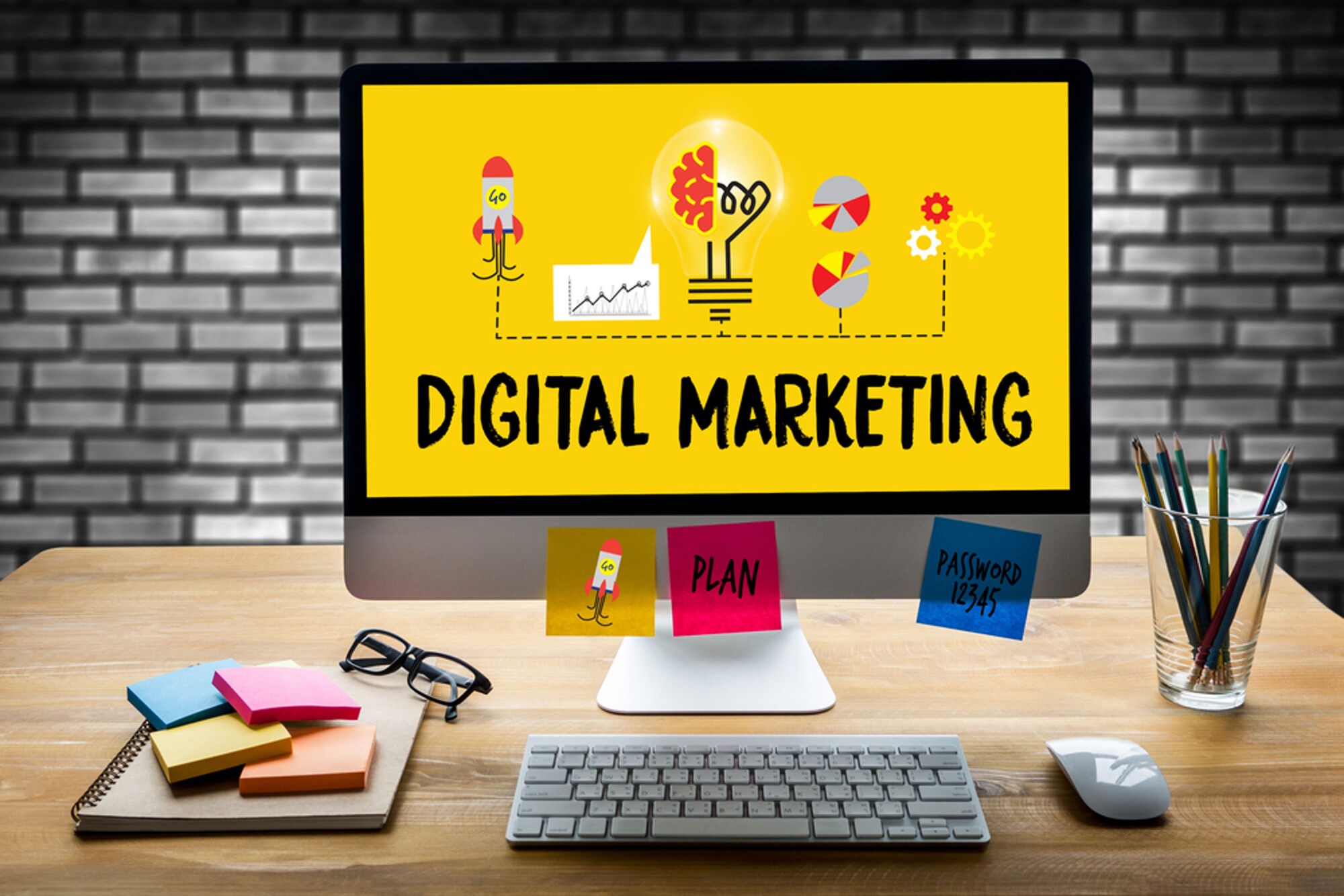3 Tips for Creating a Successful Online Marketing Strategy
Posted on March 20, 2022 by Logo Design Tips and Tricks

Today, there are 4.95 billion people internet users. This is 62.5% of the world’s total population, so think of all the people you can reach by having an online presence!
This is particularly important if you have a digital business and need to draw more people in. To do so, you’ll need a good online marketing strategy.
Need some help? Then read on for 3 tips for creating a successful digital marketing strategy!
1. Know Where Your Target Audience Is
Chances are, you’ve already profiled who your target audience is. From that, you need to hit the right platforms to make your marketing dollars count.
For example, if your audience is teenagers, then you won’t find many of them on LinkedIn or Facebook. They’re more likely to be on TikTok and Instagram.
On the other hand, if you’re targeting millennials, then Facebook is a good bet. You’ll then want to advertise on that platform, and freelance Facebook ads are a cost-effective way to do so.
2. Practice Good SEO
“SEO” stands for “search engine optimization” and entails picking good keywords to attract your target audience. The simplest way to practice good SEO is to put yourself in your target audience’s shoes and think about what they’d Google.
From there, you’ll sprinkle your content with these keywords so when users search them, your website will be at the top of the results pages. Just be careful not to overdo it, as Google can recognize when you’re “keyword stuffing” and will penalize you for it.
Be aware that different keywords have different values, some of which are not worth it to pursue. There are many free SEO tools you can use to help pick the right ones to focus on, so take advantage of that.
3. Know When to Involve the Pros
You’re probably not someone who has studied up on nor has experience in digital marketing. While there are things you can implement on your own, in many cases, it’s just not feasible to continue solo.
In that case, recognizing when you need the help of a professional is important. You’ll have to spend a little extra money, but it’ll be worth it when your marketing strategy is as solid as it can be.
Not to mention, this will also take a huge burden off your shoulders. Digital marketing is always changing, and it can be tiring trying to keep up. Marketing experts will ensure they keep tweaking your strategy to stay on top!
Improve Your Online Marketing Strategy
Having a good online marketing strategy will go a long way, especially if you’re currently struggling to run your business.
Admittedly, it can be tough to nail online marketing strategies. The industry is constantly evolving and your expertise isn’t in this area. Sometimes, the best thing is to know your limits and have professionals step in so you can make the best use of your time.
If you’d like to learn more about online marketing, keep browsing our blog page!
5 Small Business Digital Marketing Tips for New Startups
Posted on March 19, 2022 by Logo Design Tips and Tricks

In the U.S., there are over 30 million small businesses. The key to rising to the top and finding success among all these competitors is having the best small business digital marketing strategy.
Here are five digital marketing tips that will help your small business succeed.
1. Stand Out
Start your new business digital marketing by researching your target market as well as your competitors. What can you offer your customers that other businesses can’t? That’s called a unique selling proposition, or USP.
Your USP will make people choose you instead of someone else. Keep it at the core of all your digital marketing strategies.
2. Create Content
The best digital marketing goes far beyond ads. Show your target market that you offer much more than your products or services.
Start a blog, a podcast, or a video series that will teach or entertain your market. Every post is also an opportunity to improve your branding, draw in a new customer, or promote your business.
3. Use SEO
SEO, or search engine optimization, will help you rank high in search results and bring in new customers who are already looking for what you offer.
SEO uses a combination of keywords, links, images, and other factors to assess the quality and relevancy of content like webpages and blog posts. The algorithms are always changing, and it can be a full-time job to keep yourself ranking high. Stay focused on your products and services—digital marketing services like this company can help you with SEO.
4. Optimize Your Website
Most transactions now take place entirely online. To take advantage of the biggest market, you need to make sure your website looks good. You need to guide visitors from the homepage to the checkout, so use a simple layout with strong calls to action.
Don’t forget that the internet is everywhere. Ensure that your website is optimized for both desktop and mobile, and guarantee that every visitor has the same experience no matter their chosen device. The worst loss is missing a sale because of a customer’s frustration.
5. Use Social Media
Social media can stretch you thin; that’s why social media manager is a full-time job. Most digital marketing tips suggest you focus on one or two social media platforms to reach your target market.
Study up on the demographics of each site and the strategies that will get viewers, likes, and followers. Each site has its own algorithm and style, so you’ll have to create a strategy for each one. A customer who follows you is going to be more loyal, so don’t neglect this avenue.
Succeed at Small Business Digital Marketing
Armed with small business digital marketing tricks like these, your business is sure to succeed in any market. Start putting in the effort, and you’ll see your numbers rise.
Looking for more ways to make your small business a success? This site is full of the resources you need. Start exploring now to find the best ways to promote your small business today.
How to Market a Small Business
Posted on March 19, 2022 by Logo Design Tips and Tricks

Did you know that around 45% of small startup businesses fail within the first five years of trading?
Sometimes this is due to unavoidable and unforeseen circumstances. However, it’s due to a lack of business planning and effective marketing most of the time.
The good news is that by taking some time to learn how to market a small business, you can significantly increase your chances of entrepreneurial success in 2022. Luckily, you’ve come to the right place!
Read on to learn a few critical helpful small business marketing tips.
Make a Plan
Planning isn’t always fun, but it’s your best friend if you’ve got a small business. Remember, unlike large corporations, you don’t have millions of dollars to fall back on if you have a terrible year.
Set out your monthly and yearly goals, and then calculate what you need to do to make this happen. Don’t forget to include a comprehensive budget analysis for your business.
Make sure that you plan out your marketing campaigns in advance, so they look organized and professional.
Create yourself a business plan and then make it a reality.
Prioritize Your Website
Next, when learning how to market a small company, the first thing people usually talk about is your website.
You need to optimize it to help you look professional and successful; as a small business, people are naturally cynical about your services.
You should play by Google’s rules and create content that it considers valuable; you can follow the link if you need more info.
Advertise
Next, you need to actually advertise! Too many people have the product and the website but fail to tell anyone it exists.
Customers won’t come flooding through the door just because you created a website; you need to shout it from the rooftops.
Share your brand on social media; get support from friends, family, and colleagues. You could even try hosting a giveaway to encourage engagement from potential customers.
Local Marketing
Finally, if you want to know how to market a startup for immediate results, you need to focus on local marketing.
This means local SEO (e.g., geotagging posts and adding ‘near me’), word of mouth testimonials, and paper printouts left in local areas.
The more you can get talked about in your home town, the more successful you’ll be! Over time, word will spread outside of your local area, and by then, you’ll already have a loyal customer base.
Now You Know How to Market a Small Business
This simple guide details how to market a small business for the highest chances of business success. Now you’re armed with the knowledge; it’s time to put it to practice and get your name out there!
Remember, small business marketing is all about planning, optimizing your digital content, and getting local clients through the door.
Did you find this article helpful? If so, check out our other posts for all things business, finance, marketing, and more.
5 Brilliant Logo Design Tips That Will Get Your Business Noticed
Posted on March 17, 2022 by Logo Design Tips and Tricks

What do golden arches, a tick, and a piece of fruit all have in common? The answer is that they are famous logos from some of the top brands in the world (can you guess the three brands?).
A great logo is essential for any ambitious business. But it’s also a challenge to come up with a new idea that is striking, relevant, and unique.
To help you, we’ve together with this guide to 5 top logo design tips to help you craft a brand that will help your business stand out for all the right reasons.
1. Decide on a Visual Graphic
You can opt for a logo that consists solely of text, but you risk it looking dull and unoriginal. In contrast, a simple graphical picture is an excellent way for a logo to look more meaningful and professional.
The trick to a great graphic is to keep it simple. Don’t use more than two colors, and limit the design to one or two shapes if possible. In addition, avoid small elements in the graphic that are hard to see at a distance.
Try to find a graphic that you can incorporate into your business name if possible. Nike is an excellent example of this, as the tick sits underneath the business name to underline to word.
Get advice from a digital branding agency for help creating the perfect graphic.
2. Experiment
Don’t let your design phase limit you to a handful of logo design ideas. The more early creations you attempt, the better the chance you’ll find something you love.
When reviewing the designs, get friends and colleagues to give you their input.
They might react differently to the image or see something in a picture of text style that you didn’t spot (“it’s nice, but that image reminds me of the Starbucks logo”).
3. Embrace White
Lots of white space is the trick to creating any clean, professional design. And you can get away with using more than you think. The white space will help draw the eyes into your logo.
White space also makes adding your logo to print and your website more straightforward.
Most websites tend to have a white background around the top left (where a logo sits), so you won’t have to tweak your website background to match any complex logo color scheme.
4. Think of Your Wider Brand Appeal
A logo is only the start of your business branding. Once you have the design, color, and font for a logo, you’ll want to apply that same style to other marketing graphics.
So keep this close to mind when you are creating a logo. Will the text you’ve chosen look equally striking in a Facebook ad or on a poster? Or is it too difficult to read? Do the colors pop, or are they too bland?
5. Use Color Psychology
Color psychology is the term given to matching colors to meaning. For example, many people associate the color blue with calm.
Consider how you want your brand and business to come across to the public. Use that information to determine what colors will work most effectively for your logo.
Logo Design Tips to Try Today
Don’t settle for a less than perfect logo. Your business deserves more. Use our 5 logo design tips to create something that will stop people in their tracks and serve your business well in the future.
Did you enjoy this logo design advice? For more helpful business tips, head over to our “how-to” section.








